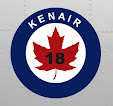Modellers who mask the lines for invasion stripes miss the true authentic look on the stripes.
The dimensions and the location of the invasion stripes were detailed in a memorandum from the Supreme Headquarters Allied Expeditionary Force dated 18 April 1944, the memo is in this SHEAF Invasion Stripes Memorandum PDF or shown on the four images below.
More WWII photo examples show the striped applied by hand with no masking and the specified dimensions not always followed.
From Wikipedia: "An earlier use of black and white bands was on the Hawker Typhoon and early production Hawker Tempest Mark Vs. The aircraft had a similar outline when seen from above and below to the Focke-Wulf Fw 190 and the bands were added to aid identification in combat. The order was promulgated on 5 December 1942. At first they were applied by unit ground crews, but they were soon being painted on at the factory. Four 12-inch-wide (300 mm) black stripes separated by three 24-inch (610 mm) white, underwing from the wingroots. From early 1943 the Typhoons also had a yellow, 18-inch-wide (460 mm) stripe on each of the upper wings, centred on the inner cannon. All of these markings were officially abandoned 7 February 1944 " an excellent article on Wikipedia Invasion Stripe Article and wikipedia invasion stripe article pdf.
In the Korean War invasion stripes were used on British and Australian aircraft as shown on these Hawker Sea Fury and Fairey Firely photos:



























No comments:
Post a Comment